Sports mats: types and selection

A gymnastic mat is a popular element of any gym; it is purchased for schools, kindergartens, sections and sanatoriums, and mats are also suitable for home workouts. Choosing a product requires a responsible approach, since its main task is to ensure safety during training.
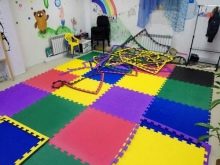
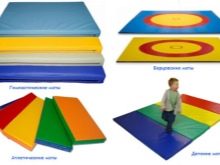
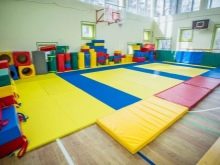
What it is?
Whatever sports training is, wherever it takes place - it should be as safe as possible. To avoid injury, mats are laid in the room. Their main function is to provide a comfortable level of stiffness during the landing of the athlete. Mats are indispensable when creating a sports area, they are often installed as an addition to the sports complex and the Swedish wall, and are also used during fitness classes in the apartment.
Due to their cushioning properties, the mats soften falls and shocks and thus prevent injury. Gymnastics mats will appeal to both kids who love to somersault, and adults who have decided to pump up their muscles.

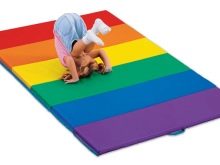

Any sports mat must be produced in accordance with the requirements of GOST, which means it must have the following characteristics:
- amortization is the ability of a product to deform at the moment of impact and elasticly assume a physiological shape that corresponds to the characteristics of the athlete's torso;
- elasticity - the property of returning mechanical energy in response to impact.
If there is a sports training in the gym, be sure that the mat will not lie idle. When children are engaged, they use products of one type, when adults - completely different.The most important thing when choosing a suitable model is not to be mistaken with the dimensions. If the mat turns out to be too small, there is a high risk that the athlete will not fit into its size and land at a distance, in which case injury is unlikely to be avoided.
The mats produced by the industry are comfortable to use and lightweight. To lift them, the most average physical fitness is enough.
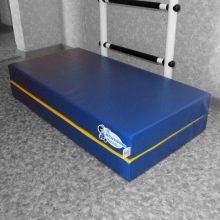
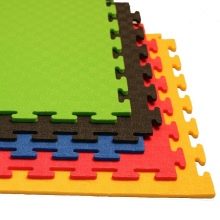
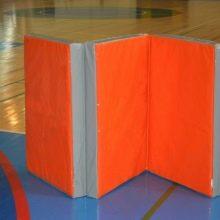
Classification by purpose
Depending on the functional purpose there are several types of products:
- wrestling;
- gymnastic;
- athletic;
- children.
Each group has its own individual characteristics.
- Children's mats are traditionally distinguished by rich bright colors, they are used in children's rooms, if the baby is active, in small gyms during acrobatics, crossfit and rhythmic gymnastics. The filler of such rugs has a thickness of 50-150 mm, the density is average.
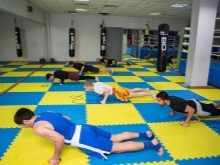

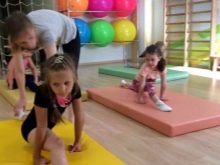
- Wrestling tatami, as the name suggests, are optimal for martial arts. This type of activity requires a fairly large and very dense carpet, the thickness of the mat can be from 40 to 100 mm.
It is important that the filler in such models has pronounced shock-absorbing properties in order to protect the athlete from fractures during falls.
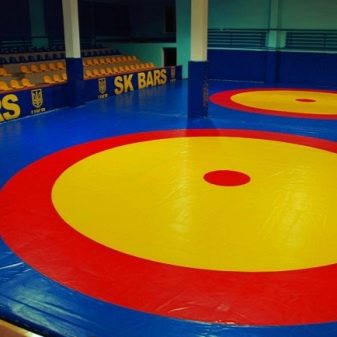
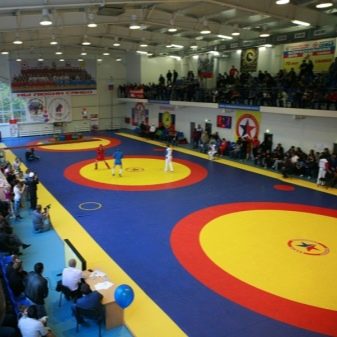
- Athletic mats used for training fitness and athletics, the height of the coating varies from 50 to 200 mm, the material is of medium or high density.
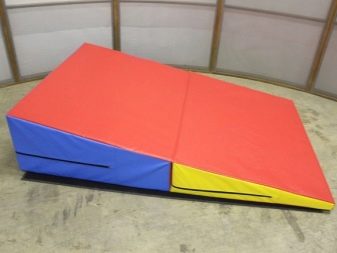
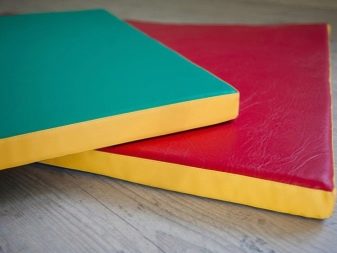
- Gymnastic models are indispensable for training in acrobatics and gymnastics, the thickness is 30-100 mm, the density of the filler is at an average level.
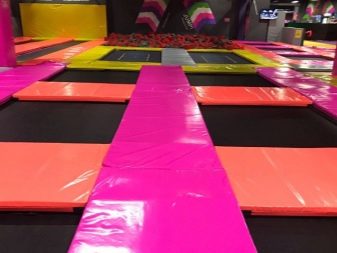

Manufacturing materials
Various types of fillers can be used in the production of mats.
- Furniture foam rubber Is a fairly soft material that can have a wide variety of density parameters. So, children's mats are made of foam rubber with a density of 23-25 kg / m3, options for adult athletes have a density of 27-30 kg / m3. Such a filler very poorly tolerates the effects of water and temperature fluctuations, therefore, if the rules for caring for it are not followed, it wears out pretty soon and becomes completely unusable.
- Expanded polypropylene - a cheap and very practical filler, these qualities ensure its wide demand in a wide variety of industries, from building construction to the manufacture of sports equipment. The material is hygroscopic and can withstand the temperature range from -80 to +80 degrees. In sports mats, expanded polypropylene with a density parameter of 25-3 kg / m3 is used.
- Foamed foam characterized by the highest density parameters. This material has a rather high cost, because it is used mainly for "big sports", in the manufacture of professional mats.
- Rubber - sports mats are made from this material, which may differ in thickness. Such mats are very popular when arranging outdoor sports grounds. Rubber is wear-resistant, it is not afraid of moisture, the material retains its performance characteristics both at low and at elevated temperatures.

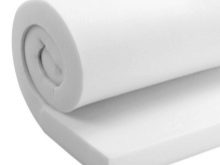
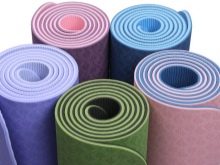
The durability and functionality of a sports mat largely depends on its surface type. The cover must be non-slip - it is very important that there are no moments in which a person can slip on a wet surface. For this, EVA canvases are usually used. The requirements for children's and ordinary school rugs are not so strict, the main thing for them is sufficient strength.
For educational institutions and sports sections, PVC-coated awning mats are usually purchased., as a rule, the seams in them are not stitched, but soldered. Such products are distinguished by their reliability, long term of use, therefore they quickly pay off their already democratic price.
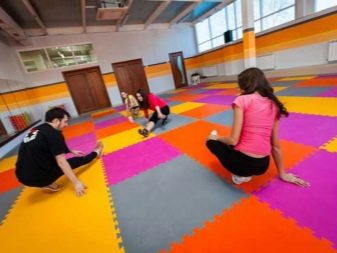
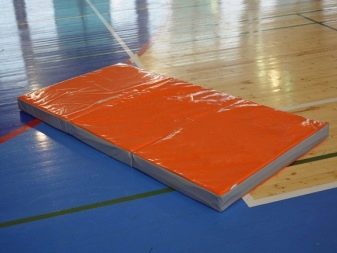
Shapes and sizes
All commercially available mats come in a variety of configurations.
- Folding sports mat - a mobile model consisting of several puzzle blocks firmly connected to each other. These mats can quickly change their shape, if necessary, they quickly unfold and are used as a softening floor covering, and then easily assembled. These mats are ideal for schools and small sports clubs, as well as for home use.
Folding mats are compact, they do not take up much storage space, and preparation for workouts lasts a matter of minutes and is not difficult even for toddlers.
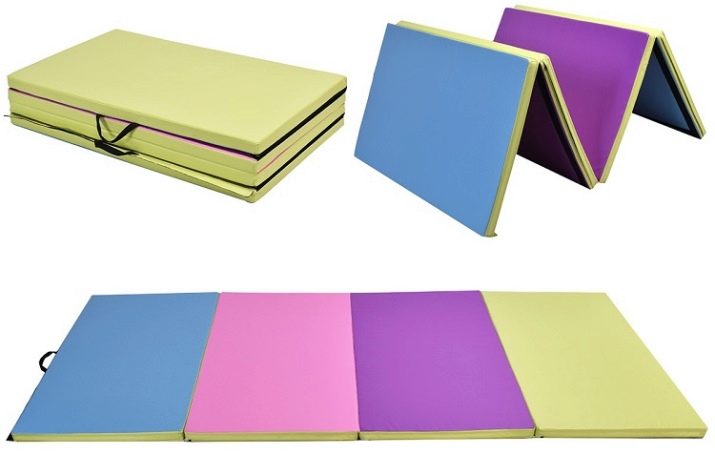
- Polyvalent mats - such models are a set of several curly mats, they are fixed with Velcro on a large common basis. The design of scattered blocks can be made in any order, which opens up the broadest prospects for the use of such equipment.
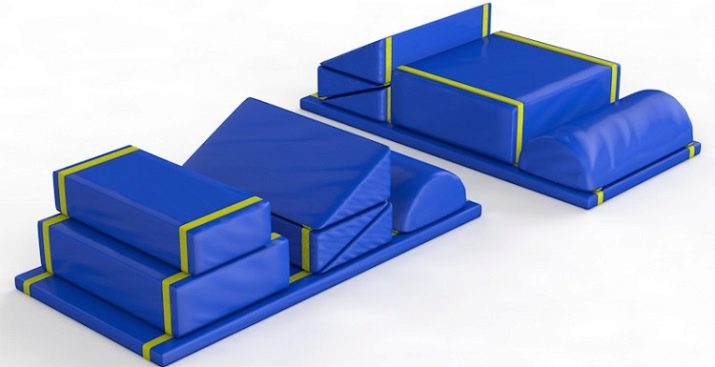
- Tangram mats - these products include 7 basic blocks, most often they are used for educational activities with young children. As you know, kids are very active and need the safest area for play. Tangram mats solve these problems completely.
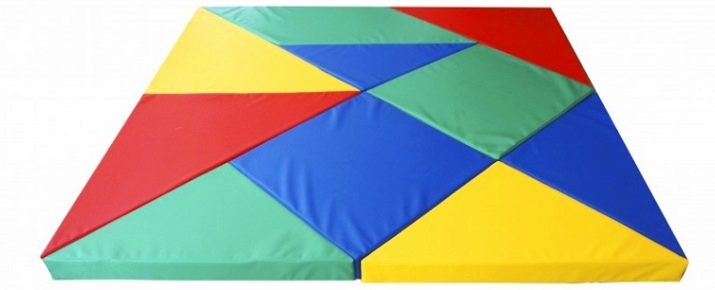
- Inflatable mats and paddles - such equipment is suitable for performing the simplest exercises, including changing body positions and static postures, therefore they are often used for yoga or general physical training lessons. These models are ideal for bedding if the gym floor is cold and dirty.
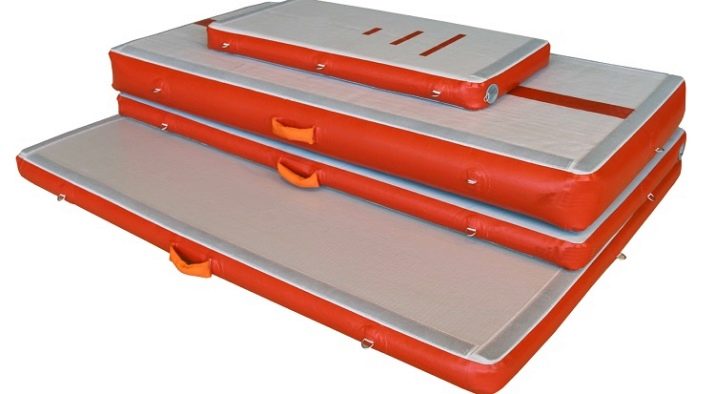
The shape and size of a sports mat will largely depend on what you will be using it for. For example, for gyms where athletes perform exercises of various types of complexity, preference should be given to classic rectangular models, and for use at home there are no strict requirements, products can be oval and round.
Standard sports mats are produced in the size of 200x100x10 cm, but if you wish, you can always purchase products with dimensions of 1 by 1, 2 by 2 and 3 by 3 m. True, it is difficult to find such models on sale, most likely you will have to make them individually to order. The thickness of the mats varies in the range from 30 to 200 mm, however, as practice shows, the most popular are models with a parameter of 40-100 mm, since it is in this range that the maximum correspondence between cost and quality is observed.

Popular models
Budo mats, for example, "dovetail", are recognized as one of the most demanded and popular models of floor mats. This type of flooring is used in many sports and can be seen in the vast majority of gyms. This product has significant advantages in comparison with other types of coatings, and first of all, it is the ability to combine composite modules. To assemble a mat of any desired size, each block is fixed to each other using a bending tape, so all the work on assembling and disassembling the structure takes a few minutes.
The number of elements and their dimensions largely depend on the purpose of the mat.


The main advantages of the dovetail include the following.
- Security - minimizing the risk of injury by trainees always comes first when choosing a mat. For the "dovetail" use ethylene vinyl acetate - a strong and environmentally friendly material that can withstand heavy loads. Such mats can be laid for wrestling - karate, taekwondo, sambo and judo.
- Anti-slip parameters - the surface of the mat allows the athlete to better maintain balance. In addition, it softens falls and minimizes the likelihood of injury and bruising.
- Versatility - "Dovetail" is optimal both in gyms and at home, the coating is popular in kindergartens and schools.
- Due to the reliable locking system, individual blocks do not move apart, and in the process of use do not lose elasticity.
- Due to the high thermal insulation component, mats can be laid in open areas and in poorly heated rooms.
- This type of mats is easy to clean and dries quickly., the material is not susceptible to infection by fungus and mold. All that is required of the gym owner is to regularly clean the flooring with water and an antiseptic.
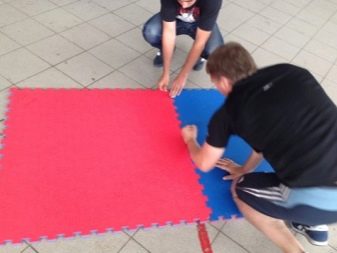
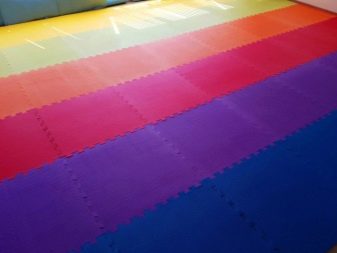
How to choose?
When choosing a gymnastic mat pay particular attention to the following details.
- Product quality - a good sports surface does not have any visual defects, it cannot have uneven seams and protruding threads, depressions and bumps on the surface. Any, even a minor flaw, sooner or later leads to damage to the product and increased injuries during training.
- Cover material - Today, the best fabric for the manufacture of mat covers is European-made PVC. Pay special attention to the seams - they should be welded, not stitched, and it is desirable that the soldering is double (external and internal). The canvas should not slip, otherwise a person will slip from his own sweat during classes. The material should not absorb moisture, otherwise the filler will quickly lose its functionality.
- Pay special attention to the features of the filler itself., it must correspond to the conditions and intensity of training, not the least role is played by its softness and ability to restore shape.
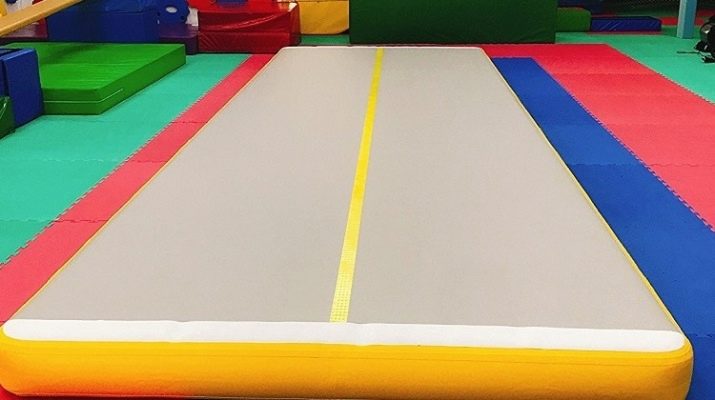
Please note that high-quality mats cannot be cheap. The high price is fully justified, because a low-quality mat does not adequately protect the athlete, which significantly increases the risk of bruises, dislocations, fractures and other injuries. Decide in advance on the required size of the shock-absorbing surface, think over the issue of the storage location of the inventory. If you have a small sports corner at your disposal, it is best to purchase a collapsible model or a puzzle mat.
When choosing the right model, try to give preference to products from well-known manufacturers, the quality of which is time-tested.
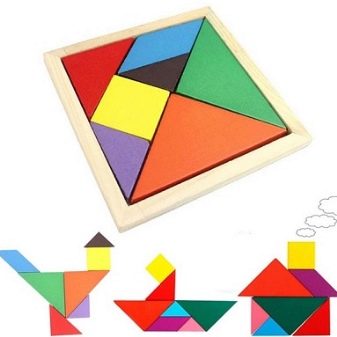
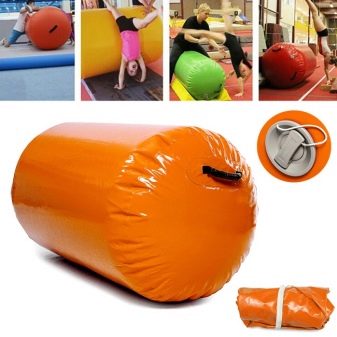
Care and storage
If you want your sports mat to serve you faithfully for many years - follow simple rules of operation.
- After purchasing and transporting the cover, it should be wiped on all sides with a damp cloth with the addition of soapy water in order to wash off all the dust that has settled during storage in the store and transportation to the destination.
- The mats can only be installed on dry and clean floors.
- In the process of flooring, it is necessary to avoid bending of the canvas, otherwise deformation of the surface is not excluded, with further operation such a canvas will adhere unevenly to the floor.
- It is better to lay out mats together, especially large ones.
- To maintain hygiene, mats should be damp cleaned regularly. If your model has stitched seams, and foam rubber is used as a filler, then it is necessary to avoid the ingress of water, otherwise the operating period of such a mat will be significantly reduced.
- For cleaning, you can use a washing vacuum cleaner or mop.
- During training, it is allowed to move only in sports shoes, if possible, avoid products with black rubber soles - it will leave marks on the mats.
- The mats are stored in stacks, in each one you can place no more than 40 products, they are covered on top with a cover or any dense fabric.
- If for any reason the foam has absorbed water, the mat should be removed from the floor and dried thoroughly.
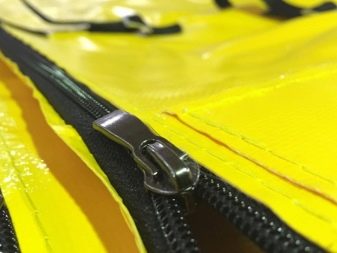

In the next video, you will find a description of the production of mats (sports, wrestling, tatami).

